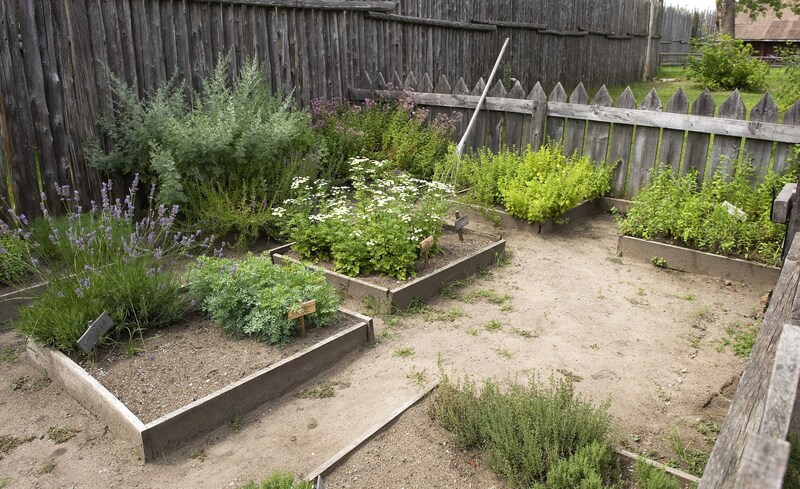Evergreen Climbers: A Green Touch for Shadowed Corners
Posted on 25/08/2025
Evergreen Climbers: A Green Touch for Shadowed Corners
Evergreen climbers are a gardener's delight, offering year-round lushness, enhanced privacy, and an elegant way to cover unsightly walls or fences. However, finding the right varieties for shaded corners can be a challenge. This article explores the best evergreen climbing plants for shade, their benefits, and how to use them to breathe life into those tricky garden spots that rarely see direct sunlight.
Why Choose Evergreen Climbers for Shady Spaces?
Shade in the garden isn't always a curse. With carefully chosen evergreen climbing plants, shadowed corners can become thriving green oases. Here's why using evergreen climbers in shaded areas is such a smart idea:
- Year-Round Greenery: While many climbers are deciduous, evergreen varieties maintain their leaves all year, ensuring even the gloomiest corners remain inviting.
- Softening Boundaries: Shaded fences, sheds, or walls can be hard and unappealing. Evergreen climbers for shade soften vertical structures, adding natural appeal.
- Wildlife Habitat: Dense foliage offers valuable shelter for insects and birds--even in areas with less sunlight.
- Increased Privacy: Shadowed corners are often along property lines. Using evergreen climbing plants forms natural, year-round privacy screens.
- Low Maintenance: Most shade-tolerant climbing evergreens are hardy and require minimal upkeep.

Best Evergreen Climbing Plants for Shaded Areas
Not every climbing plant is content in low-light locations. Below, find a curated list of the top evergreen climbers for shade to grow in your garden's shadowy corners:
1. Hedera helix (English Ivy)
English ivy (Hedera helix) is a classic evergreen climber, famed for its adaptability and reliability in the shade. Its glossy, variegated leaves provide a lush covering for north-facing walls, tree trunks, or fences.
- Light Needs: Happy with full to partial shade.
- Growth: Rapid spreader. Control is needed to prevent unwanted invasion.
- Features: Excellent for wildlife; creates a green carpet or curtain year-round.
- Tip: Regular pruning keeps ivy healthy and within bounds.
2. Trachelospermum jasminoides (Star Jasmine)
Star jasmine is a scented star in the realm of shade tolerant climbers. While it prefers dappled sun, it will thrive in partial shade, offering glossy leaves and clusters of fragrant, white blooms.
- Light Needs: Partial shade to sunny spots.
- Growth: Moderate; can be trained on trellises or fences.
- Features: Fragrant flowers in summer, rich foliage year-round.
- Shade Tolerance: Performs well in sheltered spots, but not deep shade.
3. Lonicera henryi (Henry's Honeysuckle)
Henry's honeysuckle brings soft, semi-evergreen charm to shaded corners. Its slender, twining stems climb easily, producing tubular yellowish flowers followed by black berries loved by birds.
- Light Needs: Tolerates deep shade.
- Growth: Vigorous and fast; can reach considerable heights.
- Features: Evergreen in mild winters, semi-evergreen in colder climates.
- Wildlife Value: Flowers attract pollinators; berries for birds.
4. Pyracantha (Firethorn)
Pyracantha, commonly known as firethorn, is a thorny, evergreen shrub that can be trained as a climber against walls--even north-facing ones. Its masses of orange or red berries are a feast for birds in winter.
- Light Needs: Thrives in partial or full shade.
- Growth: Dense, upright; needs support if trained vertically.
- Features: Bright berries, white spring flowers, glossy green leaves.
5. Euonymus fortunei (Wintercreeper)
Euonymus fortunei offers vibrant, variegated foliage in even the darkest corners. Varieties like 'Emerald Gaiety' or 'Emerald 'n' Gold' provide a splash of color and are hardy in deep shade.
- Light Needs: Grows well in full shade.
- Growth: Low-maintenance, clings with aerial roots.
- Features: Bright, glossy leaves all year.
- Tip: Prune to shape in spring.
6. Clematis armandii (Armand Clematis)
Evergreen clematis (Clematis armandii) is a beautiful climber for shade, bearing clusters of almond-scented white flowers in early spring. Its long, leathery leaves look striking in shaded locations.
- Light Needs: Prefers partial shade, especially at roots.
- Growth: Fast climber; requires sturdy support.
- Features: Fragrant flowers, attractive foliage.
7. Passiflora caerulea (Blue Passion Flower)
The blue passionflower brings an exotic touch. While usually associated with sun, it's surprisingly tolerant of partial shade, especially in milder regions.
- Light Needs: Handles partial shade (needs some filtered light for flowering).
- Growth: Vigorous climber.
- Features: Showy, unique flowers and evergreen leaves in mild climates.
Benefits of Evergreen Climbers in Shaded Areas
Choosing the right evergreen climbing plant for shade can dramatically improve not only your garden's aesthetics but also its eco-friendly credentials. Let's explore the many upsides of introducing these plants to shadowy corners:
- Visual Interest All Year: Leafy climbers bring textural variety and color even during the dull winter months.
- Improved Microclimate: Dense foliage can act as windbreaks, stabilizing humidity and reducing temperature extremes in small gardens.
- Wildlife Support: Evergreen climbers provide food and shelter for birds and beneficial insects when other resources are scarce.
- Energy Efficiency: Climbers on north-facing or shaded walls still offer insulating benefits, reducing heat loss in winter.
- Noise Barriers: Thick greenery absorbs sound, creating a more peaceful, secluded atmosphere.
Design Tips: Making the Most of Shade-Tolerant Evergreen Climbers
Incorporating evergreen climbing plants for shade into your landscape requires careful planning to maximize their effect and longevity. Below are tips for a stunning, sustainable transformation of shadowed corners:
Layer Your Planting
Combine evergreen climbers with low-growing groundcovers, ferns, or shady shrubs for a multilayered, lush look. Variegated leaves add light and interest to darker spots.
Select the Right Support Structures
Use sturdy trellises, wire mesh, pergolas, or existing fences. Ensure structures can support mature growth, as climbers can become heavy over time.
Mix Textures and Leaf Sizes
Contrast fine-leaved species (like climbing ivy) with broader-leaved types (like Euonymus fortunei) to create vibrancy, even in shade.
Incorporate Color and Scent
Even in shade, some climbers--like star jasmine--offer fragrant blooms. Select cultivars with variegated or colored foliage for extra brightness throughout the year.
Manage Growth for Health
Prune regularly to remove dead branches and stimulate new shoots. Well-tended evergreen climbers remain fuller and more attractive.
How to Plant and Care for Evergreen Climbers in Shade
Getting the best from shade-loving evergreen climbers begins with proper planting and care. Here's a comprehensive approach to ensuring long-lasting success:
- Prepare the Soil: Ensure good drainage. Add organic matter like compost to enrich poor soil.
- Space Properly: Avoid crowding; leave enough space for root spread and air flow, which minimizes disease risk in humid, shady sites.
- Watering: Shade generally means slower evaporation, but keep new plantings irrigated until they are established.
- Mulching: Apply mulch to conserve moisture and suppress weeds.
- Fertilizing: Feed sparingly in spring. Too much nitrogen encourages leaf growth at the expense of flowers.
- Monitor for Pests: While many evergreen climbers are resilient, shaded conditions can increase the risk of slugs and fungal diseases. Act quickly if problems arise.
Creative Uses for Evergreen Climbers in Shaded Gardens
The versatility of evergreen climbing plants for shade extends beyond simply covering walls. Get creative by:
- Screening Installations: Use dense climbers like Pyracantha or Euonymus fortunei to make attractive privacy screens beside patios or sheds.
- Disguising Unsightly Features: Conceal bins, water butts, or utility boxes with a living, leafy veil.
- Living Arches or Tunnels: Train climbers over arched supports to create green gateways, even in damper, shadier areas.
- Ground Cover: Some shade-tolerant climbers, such as Hedera helix, spread horizontally for excellent ground cover where grass struggles.
- Container Gardens: Many evergreen climbers adapt well to large pots, which can be moved to brighten shaded courtyards or balconies.
Common Problems and Solutions with Evergreen Climbers in Shade
While evergreen climbing plants are generally hardy, shaded corners may present a few challenges. Here are some frequent problems--and how to solve them:
- Slow Growth: Shady conditions reduce plant vigor. Choose climbers known for shade tolerance, improve soil fertility, and maximize ambient reflected light with pale walls or mulch.
- Leaf Yellowing: Usually a sign of waterlogging, compaction, or nutrient deficiency. Ensure proper drainage and add organic mulch each spring.
- Pest Outbreaks: Poor air circulation in shade attracts slugs, snails, and scale insects. Space plants properly, tidy regularly, and use organic controls as needed.
- Fungal Diseases: Humid, still air can lead to mildew or mold. Prune to open up growth and remove affected leaves promptly.

Frequently Asked Questions about Evergreen Climbers for Shade
- Can climbing plants really thrive in deep shade?
- Most evergreen climbers prefer partial or dappled shade, but some (like Hedera helix and Euonymus fortunei) handle low light exceptionally well. Complete darkness will stress any plant, but bright, indirect light is usually enough.
- Are evergreen climbers invasive?
- Some, such as English ivy, can become invasive if not regularly pruned and monitored. Always check local guidelines before planting.
- Can I grow evergreen climbers in containers in shady locations?
- Yes--choose a large, deep pot and use a rich, moisture-retentive potting mix. Regular feeding encourages healthy growth.
- Do evergreen climbers need much pruning?
- Annual pruning maintains shape, promotes airflow, and removes any dead or diseased growth.
Conclusion: Green Up Every Corner with Shade-Loving Evergreen Climbers
Don't let your garden's dim or shadowed corners remain dull and unused. With evergreen climbing plants for shade, you can transform these hard-to-plant areas into vibrant, living tapestries. Whether you want year-round privacy, a burst of color, or a valuable wildlife haven, there's a shade-loving climber to suit your needs.
Choose wisely, plan patiently, and nurture your climbers--and soon, even the least sunny spot will radiate with lasting green beauty.
Discover the magic of evergreen climbers--nature's answer to shaded garden challenges!



